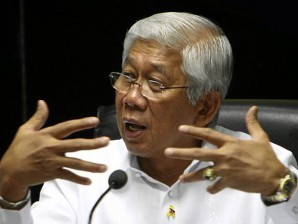PH vets join Koreans to memorialize war 60 yrs ago
SEOUL—For Koreans, the number 60 denotes the completion of one cycle.
The armistice agreement, which ended the three-year war in the Korean Peninsula 60 years ago, completes this cycle today with a ceremony to be held at the Korean War Memorial in Seoul and to be attended by dignitaries, government officials, and veterans who fought the war in the name of democracy.
Former President Fidel Ramos will lead the small contingent of surviving Filipino veterans of the Korean War in Saturday’s ceremonies.
Defense Secretary Voltaire Gazmin is the Philippine government’s representative to the armistice anniversary ceremonies.
The 81-year-old Ramos, who fought in the war as a young lieutenant with the Philippine Expeditionary Force to Korea (Peftok), will propose a toast in behalf of all the Korean war veterans at a luncheon hosted by the South Korean government.
Article continues after this advertisementAn international peace symphony was set to be held last night at Dorasan Station near the Demilitarized Zone between North and South Korea. The orchestra includes representatives of 21 of the 67 countries who fought in the war. For the Philippines, Edna Marcil Martinez of the University of the Philippines (UP) will play the viola.
Article continues after this advertisementHeeding UN’s call
The Philippines sent more than 7,400 soldiers in response to a United Nation’s call to defend democratic South Korea after communist North Korea launched an attack in June 1950. Over a hundred Filipino soldiers died in the Korean War.
An armistice was declared on July 27, 1953, but it has not led to a peace treaty. South Korea and North Korea remain technically at war.
“It was a peace without friendship,” the late Col. Nicanor T. Jimenez, who headed the Peftok 14th Battalion Combat Team, had said of the armistice.
But the ceasefire has held for six decades—with most of the soldiers that fought the battles in the peninsula now in the twilight of their years.
The Korean War holds the Guinness World Records title for having the most number of countries come and fight together in a war.
South Korean officials say their country is forever grateful to the nations that helped fight for their country in the war and looks forward to years of stronger alliance, thus the armistice anniversary theme: “Our future together.”
“For all of our UN allies, we are very grateful and thankful for the support during the Korean War and the people of Korea will never forget what the UN allies have done for Korea,” said Park Sung-choon, Minister of Patriot and Veteran Affairs, told foreign reporters on Thursday.
Park was a 5-year-old boy when the war broke out, remembering only that his family fled to another city on a small fishing boat. “Big waves hit the boat and I had seasickness and I hid under the blankets,” he recalled.
Park said “appreciation events” had always been part of his ministry’s programs as a way to express South Korea’s gratitude to ally nations, including a “Revisit Korea” program for the veterans and their descendants.
In the Philippines, the Korean government has built a Korean War Museum as well.
Along Sejong Road in downtown Seoul, in front of the Seoul Finance Center building, the Philippine flag flies along with those of other allied nations, accompanied by a photo display.
“Thanks run forever,” one of the display signs in the photo exhibit says.
‘Freedom is not free’
“Freedom is not free. Through the Korean War, we understood that strong national security is very important to defend our country and because of the geopolitical location of Korea, we understood that it is very important to have strong allies,” Park said.
The Philippines’ 7,420 combat troops comprised of five battalion combat teams collectively called Peftok that fought from 1950-1953 and stayed on to help rebuild the country after the armistice.
The 1,496-strong 10th Battalion Combat team was the first to be deployed to South Korea, bringing with them tanks and mortars.
According to the “Korean War Almanac” written by military strategist Harry Summers Jr., the Philippine battalion was attached to the Third Infantry Division’s 65th Puerto Rican infantry regiment because the military leadership in South Korea thought that the Filipinos spoke Spanish.
100 Filipino soldiers killed
It is believed that over 100 Filipino soldiers were killed in action. The first Filipino to fall in South Korea was Pvt. Alipio Ceciliano, the Philippine Embassy said.
According to Summers, the UN ground forces, which included the Philippines, Thailand, Turkey, Colombia and Belgium, suffered 1,800 casualties.
The Filipino dead were temporarily buried in South Korea but their remains were later returned to the Philippines.
There were 41 Filipino prisoners of war who were released after the armistice agreement.
In 1962, Filipinos also helped construct the current US Embassy and Korea’s Ministry of Culture, Sports and Tourism buildings, then the tallest buildings in South Korea.
Park said he still looked forward to a “peace with friendship” with North Korea, despite continuous tensions between the two Koreas. He still hopes a reunification of the two Koreas will finally end the war.
Korea, a former Japanese colony, was divided after the 1945 victory of Allied Forces in World War II. The United States and the Soviet Union occupied the former Japanese colony, splitting it between them along the 38th parallel.
